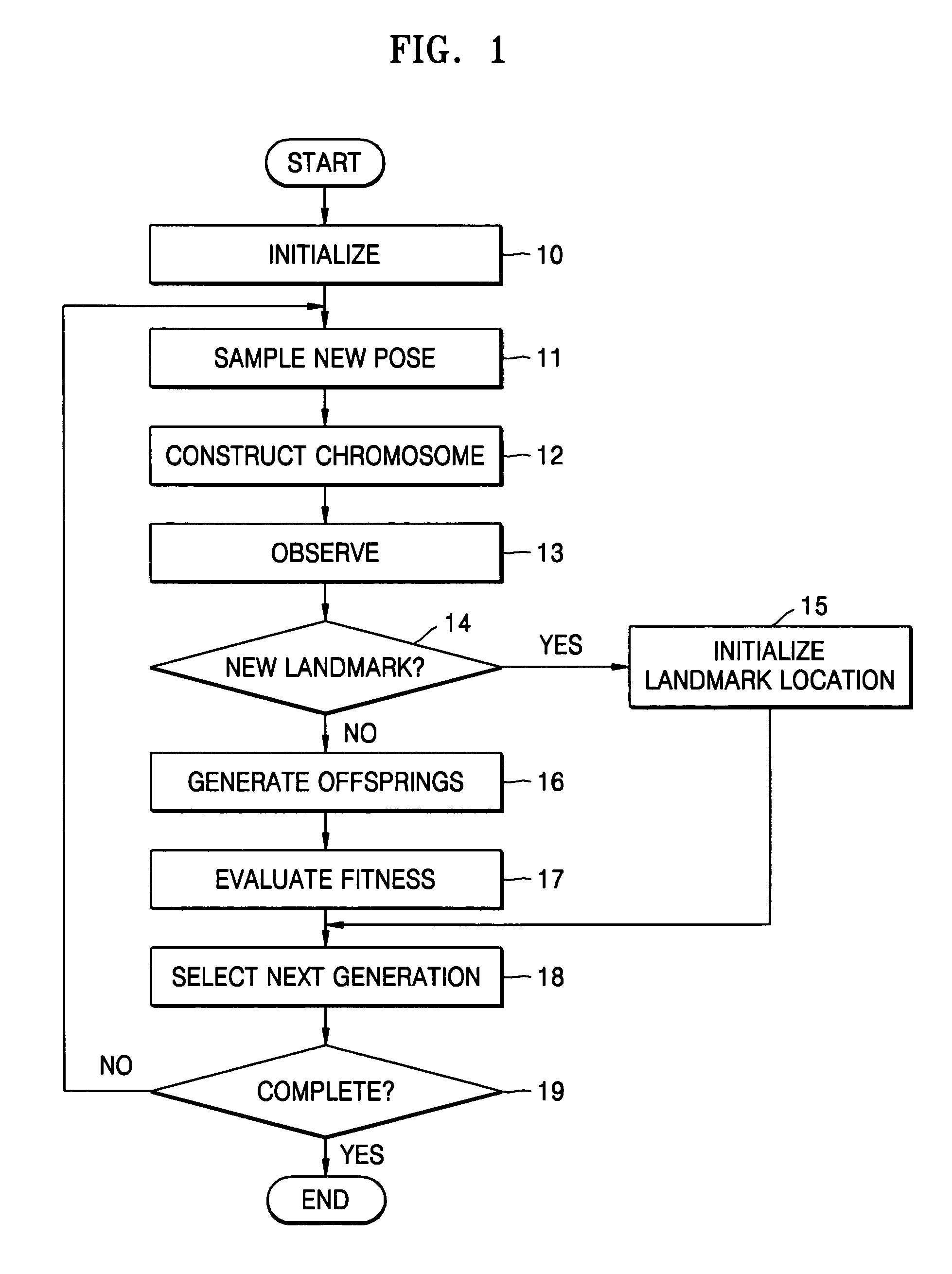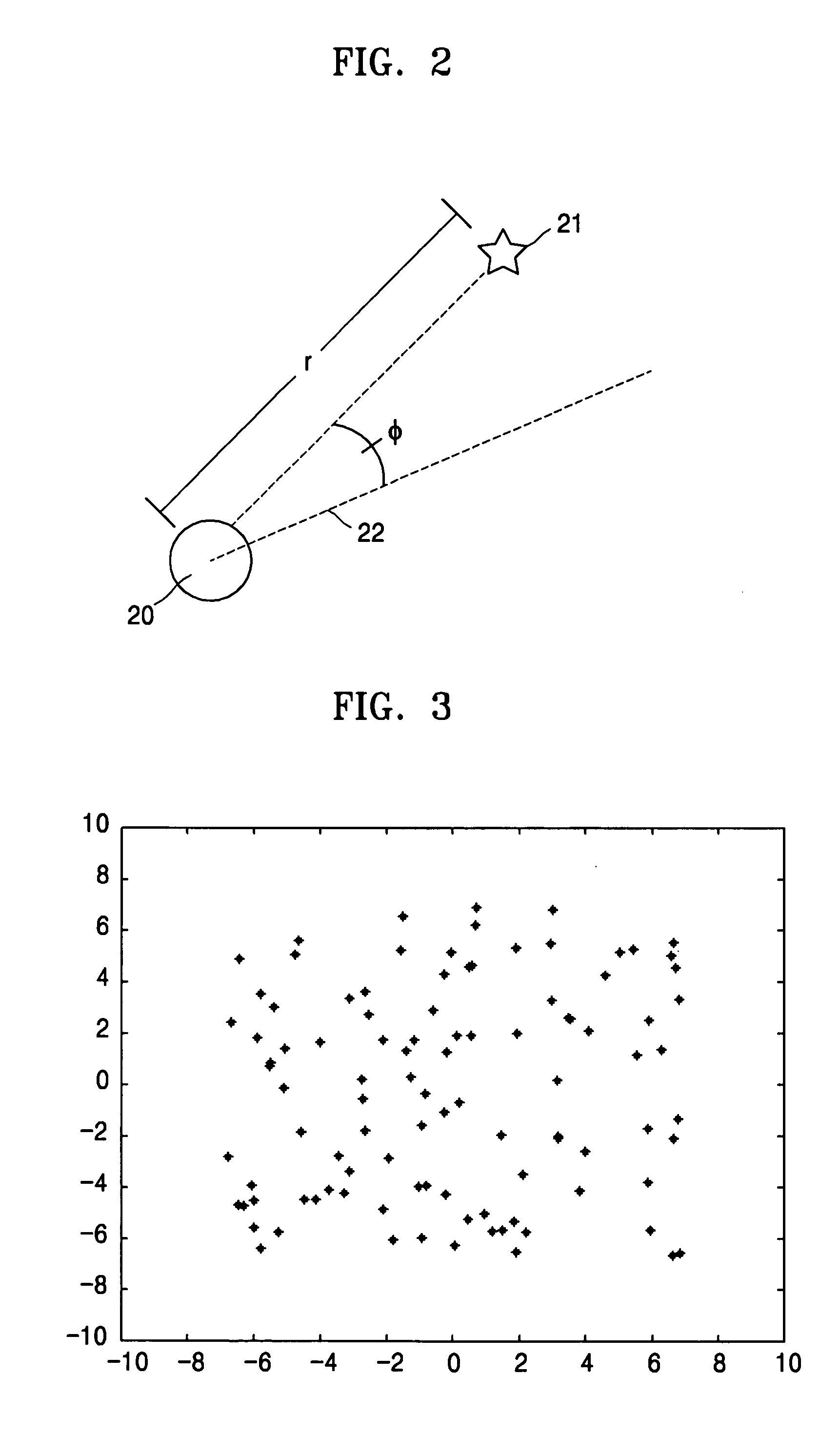Method used by robot for simultaneous localization and map-building
a technology of localization and map building, applied in the direction of distance measurement, programme control, navigation instruments, etc., can solve the problems of error requiring correction and difficulty in calculation
- Summary
- Abstract
- Description
- Claims
- Application Information
AI Technical Summary
Benefits of technology
Problems solved by technology
Method used
Image
Examples
Embodiment Construction
[0022]Reference will now be made in detail to an embodiment of the present invention, examples of which are illustrated in the accompanying drawings, wherein like reference numerals refer to the like elements throughout. The embodiment is described below in order to explain the present invention by referring to the figures.
[0023]FIG. 1 is a flowchart illustrating a method of simultaneous localization and map-building according to an embodiment of the present invention. Referring to FIG. 1, first, the pose (i.e., orientation) of a robot and locations of landmarks are initialized (Operation 10). The pose of a robot includes a direction in which the front of the robot faces, besides (x,y) coordinates indicating a location of the robot. Since the present embodiment adopts (i.e., uses) a particle filter to localize the robot, a plurality of particles are generated in the surrounding of the initial pose of the robot in order for the initialization. The surrounding of the initial pose indi...
PUM
 Login to View More
Login to View More Abstract
Description
Claims
Application Information
 Login to View More
Login to View More - R&D
- Intellectual Property
- Life Sciences
- Materials
- Tech Scout
- Unparalleled Data Quality
- Higher Quality Content
- 60% Fewer Hallucinations
Browse by: Latest US Patents, China's latest patents, Technical Efficacy Thesaurus, Application Domain, Technology Topic, Popular Technical Reports.
© 2025 PatSnap. All rights reserved.Legal|Privacy policy|Modern Slavery Act Transparency Statement|Sitemap|About US| Contact US: help@patsnap.com



